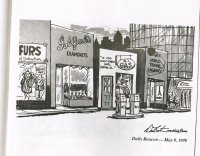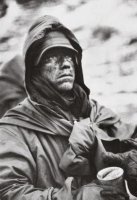OneManGang
Senior Member
- Joined
- Sep 7, 2004
- Messages
- 2,038
- Likes
- 9,674
Tennessee vs The Maxims vs Pittsburgh
DATE: 10 September 2022
PLACE: Acrisure Stadium, Pittsburgh, PA
ATTENDANCE: 59,785
FINAL SCORE: Tennessee 34 Pitt 27 (OT)
Plus ça change …

So, now the second “Johnny Majors Classic” is in the books. Coach Majors is, of course, an icon at both UT and Pitt. He helped win an SEC title as a player and coached the Vols to three more as head coach. At Pitt he took them to a national title aided by the performance of one Tony Dorsett. Dorsett was part of the group that unveiled a bust of the coach before the game. It's high time for Tennessee to get off the dime here as well.
Folks kept asking Sunday for Your Humble Scribe's assessment of the game.
(Ahem) It was a very “John Majors” game. It was dominated by defense on both sides with the offenses struggling to answer and counting on big plays to win. It was a hard-hitting affair with very little in the way of style points but lots of impacts. Finally, regulation ended in a tie score. Majors had ten of those through his coaching career of which eight came during his tenure on The Hill.
Tennessee took the opening kickoff and did precisely squat. Paxton Brooks sliced his punt and Pitt took over on their 45. They drove down to the Vol 12 where they stalled and kicked a field goal.
The Vols again did nothing and punted again. Pitt promptly handed the ball to Israel Abanikanda who slashed through scattering Vol defenders like so much monkey sh** and was next seen in the end zone 76 yards away. Vol fans from Mountain City to Dyersburg uttered an audible “uh-oh!”
However, that seemed to light something of a spark in the Vols who drove deep into Pitt territory before coming up short on fourth down. Then Trevon Flowers intercepted a pass in the end zone and the Vols hit a 61-yard pass from Hooker to Tillman which ended on the half-yard line whereupon Jabari Smalls did the honors.
End of 1st Quarter
Score: Tennessee 7 Pitt 10
Pitt scored on their first possession of the 2nd quarter But then the Vols built on their efforts and scored 17 unanswered points in the second quarter with touchdowns by Bru McCoy and Jabari Smalls and a field goal by Chase McGrath
The Vol defense made itself felt finally getting that pass rush we all looked for last week hurrying, sacking and putting hits on Pitt QB Kedon Slovis to the extent that he was unable to answer the 2nd half bell due to injury.
End of 2nd Quarter
Score: Tennessee 24 Pitt 17
The 3rd quarter was Old School football with both defenses dominating and neither offense able to score. The Panthers missed on two field goals but ended the quarter in scoring position.
End of 3rd Quarter
Score: Tennessee 24 Pitt 17
Pitt capitalized on the first play of the final canto. The Vols answered with another McGrath field goal. The defense held the Panthers to a 3-and-out and Vol fans had just begun to breathe easier when Flowers muffed the ensuing punt and Pitt was in business, tying the game on a short TD pass.
End of 4th Quarter
Score: Tennessee 27 Pitt 27
In overtime, the Vols scored first on a 28-yard strike from Hooker to Tillman. The Vol defense reached deep and stuffed Pitt and that, as they say, was that.
Final Score
Score: Tennessee 34 Pitt 27
*******
27 November 1950, Along the Yalu River, North Korea
The soldiers waiting in the bitter cold for the attack signal would have been quite surprised to find that they were not there. General Charles Willoughby, G-2 (Intelligence) for the Far East Command and reporting directly to General Douglas MacArthur had told his boss they were not there. MacArthur, independent of Willoughby, did not believe they were there and therefore they were not there. He sent messages to the Pentagon baldy stating that they were not there. Since the Far East Command was the primary intelligence source for the Pentagon, and by extension, President Truman, they all believed they weren't there either.
But they were there, the 150,000 combat-hardened men of the Chinese 9th Army Group were to attack that very night down both sides of a large reservoir called Changin in Chinese, Americanized to Chosin. Their mission: to annihilate the Americans of the US Army 7th Infantry Division to the east and the 1st Marine Division on the west side of the Chosin. The 9th Army Group was but a fraction of the more than one million Chinese soldiers massed along the Yalu River at the northern base of the Korean peninsula.
The fact that the Marines were there at all was something of an accident. President Truman despised the Corps based on prejudices dating from his service in WWI. He wanted the Corps reduced to its traditional role of ships guards and raiding forces. His Secretary of Defense, Louis Johnson, went even further. He wanted the Corps abolished entirely with its assets divided between the Army, Air Force and Navy. All, of course, in the name of saving money. In Johnson's view, the U.S. had nuclear weapons and B-29 and B-36 bombers to deliver them. The Navy and Marine Corps were not needed and pretty much most of the Army fell into that category as well. America's conventional forces withered on the vine.
As it was the Marine Corps had been slashed post war to about 75,000 total members from its WWII peak of six divisions and five air wings. The only division left was the 1st Marine Division and it only had one regiment, the 5th Marines.
Two events upset Johnson's world. In August, 1949, the Soviets detonated an atomic bomb, roughly a decade before anyone in the US thought they could. Then, on 25 June 1950, the communist North Koreans, (KPA – Korean Peoples Army) using heavy weapons (T-34 tanks and artillery) supplied by Russia and China invaded South Korea (ROK – Republic of Korea) whose army was denied these by the US in order to not “provoke” the Communists.
It was a rout.
The ROKs had nothing that could even dent a T-34, let alone knock one out. The US made a quick decision to intervene and convinced the UN (the Russians were boycotting in a fit of pique) into sanctioning the use of force. MacArthur was named to command UN forces most of whom were Americans and ROKs. The closest American unit was the 24th Infantry Division which was on occupation duty in Japan. They were the very epitome of “fat, dumb, and happy” to use the language of the day. Their primary anti-tank weapons were some early bazookas and a few HEAT rounds for their 105mm howitzers. The 24th did have a few tanks, but they were M-24 light tanks which were never intended to go up against T-34s.
They got steam-rollered.
Fortunately for the Americans and their ROK allies, the KPA was Soviet-trained and therefore had problems maintaining their advance. Also, aircraft are a lot easier to move than infantry or armor and were already busy attacking KPA lines of communication. The USAF was operating F-80 and F-84 jets from bases in Japan and in Korea along with F-51 (P-51) Mustangs. The Navy moved a couple of carriers close by and joined in, But, while the advance was slowed, it was relentless. By early September, the lines finally stabilized around the port city of Pusan at the very tip of the peninsula.
By this point reinforcements were arriving in numbers. MacArthur was already well into planning his masterstroke to reverse the field and put the KPA to fly. Almost as a snub to Secretary Johnson, it would be a massive amphibious operation with landings at the port of Inchon just a few miles from the ROK capital of Seoul which had fallen early in the KPA advance. MacArthur made it known he wanted Marines to lead the assault.
The Marines began to hastily rebuild the 1st Marine Division. G(eorge) Company, 3rd Battalion, 1st Marine Regiment (G/3/1) was one of the component units rapidly organized from guys just out of boot camp, active duty Marines and reservists. After training they boarded a transport and sailed to Pusan. On arrival there, they were bundled onto an LST to join the fleet off Inchon.
The story of Inchon is far outside this work. Suffice to say that beginning on 13 September, the landings at Inchon, despite many risks and problems, were a huge success. Seoul was retaken quickly and the UN forces threatened to cut off the entire KPA deep in South Korea. The KPA shattered and fled.
As the UN forces neared the 38th Parallel, MacArthur demanded to be allowed to advance into North Korea all the way to the Chinese border to eliminate the communist threat to South Korea once and for all. President Truman gave him the green light and the UN force went into North Korea.
The 1st Marine Division was paired with the Army 7th Infantry Division in X (10th) Corps and moved out. By 19 October, the North Korean capital of Pyongyang had fallen.
The Chinese had made it very clear they were going to intervene and sent messages that they would not tolerate American troops on their border. This was a fig leaf as Chinese troops were already south of the Yalu River which forms much of the border.
X Corps commander Ned Almond chafed at any delays and ordered his divisions to disregard flank and rear security and push on to the Yalu. The Army 7th Division followed orders. MG O.P. Smith of the Marine division listened to his subordinates who were bumping into Chinese units and set up a series of strong points along the road that formed his main supply route (MSR). The 5th Marines were at the tip of his spear, the 7th Marines were scattered along the west side of the reservoir and George Company and the rest of the 1st Marines brought up the rear.
The Chinese launched their attack and outposts and isolated units were crushed under an avalanche of Chinese. The basic Chinese tactic was to attack in four waves. Only the first two waves carried weapons. As they were wiped out, the following waves would pick up their weapons and carry in the attack. It was simple, it was brutal, and it was damned effective. General Peng of the 9th Army group realized he had a golden opportunity. With the Americans divided by the reservoir, he could advance on foot southward out of range and then turn and attack the MSRs at multiple spots.
As the Chinese flood threatened to overwhelm the 5th Marines its CO, Col. Raymond Murray, told his regiment, “All hands! Make sure every shot counts.”
Proving that denial is not just river in Egypt, Ned Almond issued orders three days after the Chinese attack for X Corps to “continue its advance.”
George Company was assigned to help provide security for the divisional HQ in Hagaru-ri, a few miles south of the reservoir, which also had an airstrip. If it fell, the American components of X Corps could be cut off and annihilated.
But first, George Company had to get there.
George Co. would move out from Koto-ri on 29 November as party of a column of over 140 trucks, along with a company of Royal Marines, D(og) Company of the 1st Marine tank battalion and other bits and pieces of units. Basically if you weren't otherwise occupied and could hold a rifle, they bundled you into a truck. They knew it would be rough. What they didn't know was that an entire division of Chinese troops occupied the hills overlooking the road.
It was 11 miles from Koto-ri to Hagaru-ri, under normal circumstances it should have taken at most an hour, today it would take nearly ten.
The Chinese cut off and chewed up the rear of the column while the lead stopped and started due to ambushes and road blocks. Flaming trucks littered the road. Captain Carl Sitter, George's skipper, radioed back to Gen. Smith asking if they should turn back. Knowing the desperation of the situation Smith answered, “Press on at all costs.”
Darkness was falling. The road was still swarming with Chinese even as they neared Hagaru-ri. A smoking Chinese grenade landed in the bed of a truckload of Marines. PFC William Baugh didn't hesitate, he dove on the grenade and clutched it to his chest. His parents accepted his Medal of Honor on his behalf.
As George and the other survivors straggled into Hagaru-ri, they collapsed in exhaustion. The road they traversed and would have to go back along again as the retreat continued would enter Marine lore as “Hell Fire Valley.”
The morning of 30 November found George ordered to occupy an defend East Hill, a 500-meter high hill on the northwestern corner of the perimeter that overlooked the MSR. If the Chinese took the hill they would render Hagaru-ri untenable and cut the road. The Chinese realized this as well. In the bitter cold, the daily highs were around 20º below zero, the ground was hard frozen and the Marines couldn't dig in. A full Chinese regiment of over 1500 was assigned the task with more in reserve. They boiled up the slopes of East Hill and despite enormous casualties closed with the 200 or so men of George Company.
The fight degenerated into hand-to-hand combat. Grenades flew back and forth, Chinese mortars pounded the Marine positions and American artillery landed in the Chinese assembly areas. As the dim sun rose, the Chinese attacks faded. Against enormous odds, the men of George Company held.
Marines were stunned to see the slopes covered with corpses. Capt. Sitter finally let himself be evacuated. His determined leadership while wounded and under fire would earn him the Medal of Honor.
George held the hill still on 4 December when the men of the 5th and 7th Marines made their way into the perimeter. As they approached, the exhausted men straightened their ranks and marched in singing the Marine Corps Hymn and the Marines manning the perimeter joined in. No man who saw and heard this ever forgot it.
The 1st Marine Division was now together, battered and bloodied but unbeaten. The survivors of the 7th Infantry Divsion also filtered in and were added to the forces available. They now made plans to attack along the road through Hell Fire Valley and on to the the port of Hungham where they would board ships and return to UN lines in South Korea. It was an epic battle all the way and deserved its own pages in Marine Corps lore.
It was somewhere along that Via Dolorosa that photographer David Douglas Duncan, who had been a Marine officer in WWII, was snapping pictures. He came upon a Marine sitting and chasing a frozen bean around the bottom of a C-Ration can. He caught it and put it in his mouth to thaw so he could eat it. Duncan asked him, “What would you want if you could have any wish?”
The Marine looked to the sky and answered:
“Give me tomorrow.”
********
So, how did the Vols do against The Maxims?
1. The team that makes the fewest mistakes will win.
In reality both teams made enough unforced errors to lose the game. It came down to what the respective teams DID with those errors.
2. Play for and make the breaks. When one comes your way … SCORE!
Indeed. The Vols defense forced Pitt into a number of bad plays and the offense took advantage,
3. If at first the game – or the breaks – go against you, don't let up … PUT ON MORE STEAM!
It is worrying that the Vol offense seemed to repeat last year and took most of the 1st quarter off. However, they didn't fold when the Panthers jumped out to a 10-0 lead. The story of the Vols in this game is this Maxim.
4. Protect our kickers, our quarterback, our lead and our ballgame.
Other than called runs and scrambles, Hendon Hooker didn't get much dirt on his jersey. However, one has to ask just what Flowers was doing shagging that punt in the fourth quarter.
5. Ball! Oskie! Cover, block, cut and slice, pursue and gang tackle … THIS IS THE WINNING EDGE.
This is chapter two of Vols story of the game. The defense came to play and despite a few breakdowns (have the Vols covered a short crossing pattern in this century?) played well.
6. Press the kicking game. Here is where the breaks are made.
Paxton Brooks needs to learn the two-step kicking motion George Cafego taught his punters. He also had a case of the “yips” which fortunately weren't fatal. Coverage was manifestly improved over Ball State.
7. Carry the fight to Pittsburgh and keep it there for sixty minutes,
And even longer!
In the end this was a quality win for Tennessee's rebuilding football program. As I've noted before, teams learn how to win big games by winning big games. For the Vols, school is in session!
Suggested Reading:
Xiaobing Li, Attack at Chosin: The Chinese Second Offensive in Korea
Patrick K. O'Donnell, Give Me Tomorrow
All quotes above are from this book
Martin Russ, Breakout: The Chosin Reservoir Campaign, Korea, 1950
Give me tomorrow. David Douglas Duncan and LIFE Magazine

Last edited:



